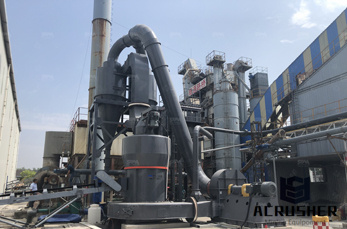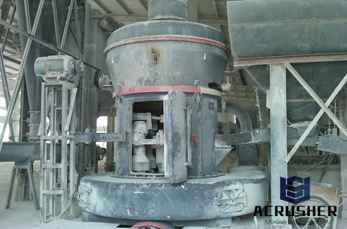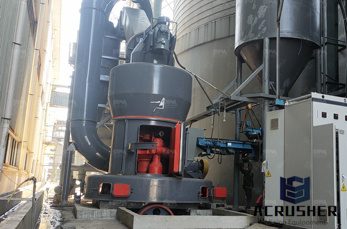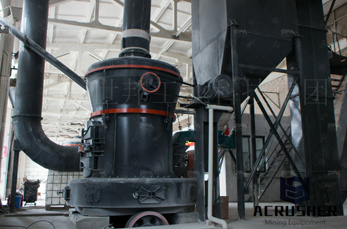For The Navajo Nation, Uranium Mining''s Deadly Legacy ...
Apr 10, 2016· For The Navajo Nation, Uranium Mining''s Deadly Legacy Lingers : Shots Health News Uranium mining on Navajo lands ended in 1986, but the tribe is .
 WhatsApp)
WhatsApp)
Apr 10, 2016· For The Navajo Nation, Uranium Mining''s Deadly Legacy Lingers : Shots Health News Uranium mining on Navajo lands ended in 1986, but the tribe is .

Dec 05, 2008· David Thorpe: The effects of uranium mining are disastrous. To minimise the risks, the nuclear supply chain needs independent auditing ... The situation for the depleted uranium waste arising ...

Nov 26, 2018· Are uranium mines near the Grand Canyon hazardous to wildlife? The risk to wildlife from uranium mining near the Grand Canyon seems clear to .

This happens either in a uranium mill (the next step in processing ore from a conventional mine) or during in situ recovery (ISR). For that reason, the NRC regulates in situ recovery facilities (as stated above), as well as uranium mills and the disposal of liquid and solid wastes from uranium recovery operations (including mill tailings ...

Uranium mining and processing are associated with a wide range of potential adverse human health risks. Some of these risks arise out of aspects of uranium mining and processing specific to that enterprise, whereas other risks apply to the mining sector generally and still others are linked more broadly to largescale industrial or construction activities.

Nov 02, 2016· The modern uranium mining industry began in the 1940s primarily to produce uranium for weapons and later for nuclear fuel. EPA''s Uranium Location Database, with information provided by other federal, state, and tribal agencies, includes 15,000 mine locations with known or potential uranium occurrence in 14 western states.

Jul 14, 2015· Keri Phillips traces the history of uranium mining in Australia and Ranger''s role in it. Welcome to ABC Radio National. ... in the process of having a cover and waste rock put over the top of ...

While the Navajo eventually were able to ban mining on their land these problems still exist within other communities today and should not be overlooked in considering the future of Uranium mines. Looking to the Future . Research has been seeking progress in the management of the waste and risks of Uranium mining.

Akdala is an operating in situ recovery (ISR) uranium mine located in the ChuSarysu basin of the Suzak region, South Kazakhstan province. With roughly 435 employees, 70 percent of Akdala is owned indirectly by Uranium One through the Southern Mining and Chemical Company (SMCC) joint venture, a Kazakhstan limited liability partnership.

The Trump administration announced Friday it would withdraw an Obamaera proposal aimed at regulating how waste from uranium milling is disposed. ... mining ban that prohibited uranium mining .

Uranium and Your Health. Uranium is a naturally and commonly occurring radioactive element. It is found in very small amounts in nature in the form of minerals but may be processed into a silvercolored metal. Rocks, soil, surface and underground water, air, plants, and animals all contain varying amounts of uranium.

Mining residues Waste from uranium extraction. The residues from processing uranium ores are disposed of on the sites of the mines. This mining waste is very lowlevel waste because uranium, which is very longlived (it can last for several billion years), is one of the least radioactive elements in nature and the uranium content of uraniumbearing ores is generally low.

5. Surface mines can generate up to 40 tonnes of waste rock for every tonne of uranium ore produced, while underground mines produce about one tonne of waste rock per tonne of ore. There are 109 million tonnes of waste rock from uranium mining in Canada today. Pembina Institute: Uranium Mining: Nuclear Power''s Dirty Secret, May 2007 6.

Uranium Mining In the last fifty years uranium has become one of the world''s most important energy minerals. It is used almost entirely for making electricity, though a small proportion is used for the important task of producing medical isotopes.

Nov 15, 2016· As we have already established, uranium mining is an extremely destructive and problematic process. It uses a rage of toxic chemicals, pollutes local water supplies, and results in millions of tonnes of toxic waste every year. The average nuclear reactor requires 25 tonnes of uranium .

ISR mining technology was developed independently in both the Soviet Union and the United States in the mid1960''s. The method was developed to extract uranium from typical roll‐front type deposits (a sub‐type of sandstone uranium deposits) located in water‐saturated permeable sediments that were not suitable for economical conventional mining techniques.

Radioactive Waste and Uranium Mines Description. ... Uranium Mining and Processing Wastes are a special category of (normally) low level wastes, which are of major concern because of the volumes of radiating materials concentrated in usually a small area, thus creating an overall hazard. While uranium is mined around the world, some of the ...

From 1972 through 1985, uranium recovery in Texas was dominated by conventional mining and milling. More recently, companies (licensees) have been using In Situ Leaching (ISL), a process that makes possible the recovery of uranium without disturbing the natural surface, generating dust, or producing waste known as tailings.

Uranium mining in Arizona has taken place since 1918. Prior to the uranium boom of the late 1940s, uranium in Arizona was a byproduct of vanadium mining of the mineral carnotite.. California. Uranium was discovered in 1954 in the Sierra Nevada of Kern County, along the Kern River about 30 miles (50 km) northeast of mines, the Kergon mine and the Miracle mine, made small ...

All of Uzbekistan''s uranium production is by insitu leach methods. Navoi Mining Metallurgical Combinat, which is part of state holding company Kyzylkumredmetzoloto, is the country''s sole operator for uranium mining and production. Researched and written by World Nuclear News

Uranium Mill Tailings Uranium mill tailings are primarily the sandy process waste material from a conventional uranium ore residue contains the radioactive decay products from the uranium chains (mainly the U238 chain) and heavy metals. As defined in Title 10, Part 40, of the Code of Federal Regulations (10 CFR Part 40), the tailings or wastes produced by the extraction or ...

Moratoria and Bans on Uranium Exploration and Mining. Uranium as byproduct from mining for other minerals · Byproduct recovery with uranium mining; Uranium Recovery from Phosphates; Uranium Recovery from Seawater; Uranium Recovery from Waste Materials (such as tailings, coal ash, and others) Reprocessed Uranium

Is uranium plentiful and does mining it produce dangerous waste? When uranium is discovered in the earth''s crust, normally the ore is % dirt and % Uranium. Remember that the total uranium in the dirt (U238 and 235) contains only % of all the uranium mined.

The safe longterm management of waste rock and uranium mill tailings is an important aspect of the licensing process for uranium mines and mills. Techniques have been developed to safely contain this waste from the environment by using natural and/or manmade barriers to prevent contact between the tailings and groundwater. ... Uranium mining ...
 WhatsApp)
WhatsApp)